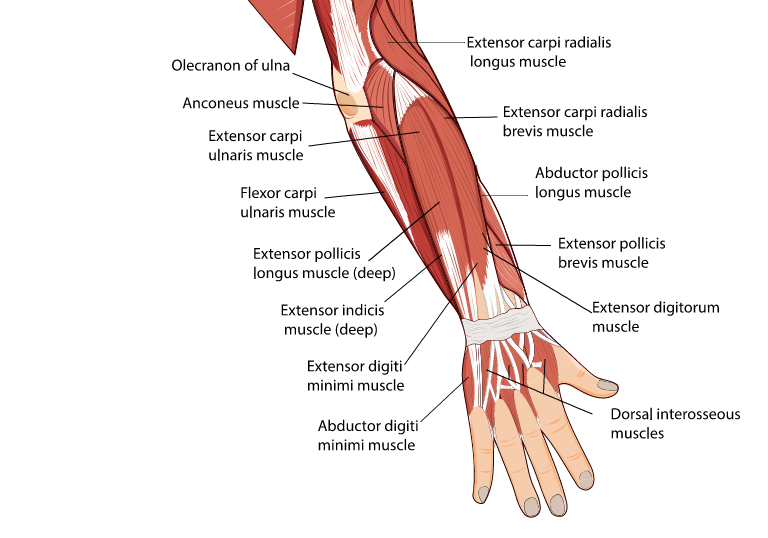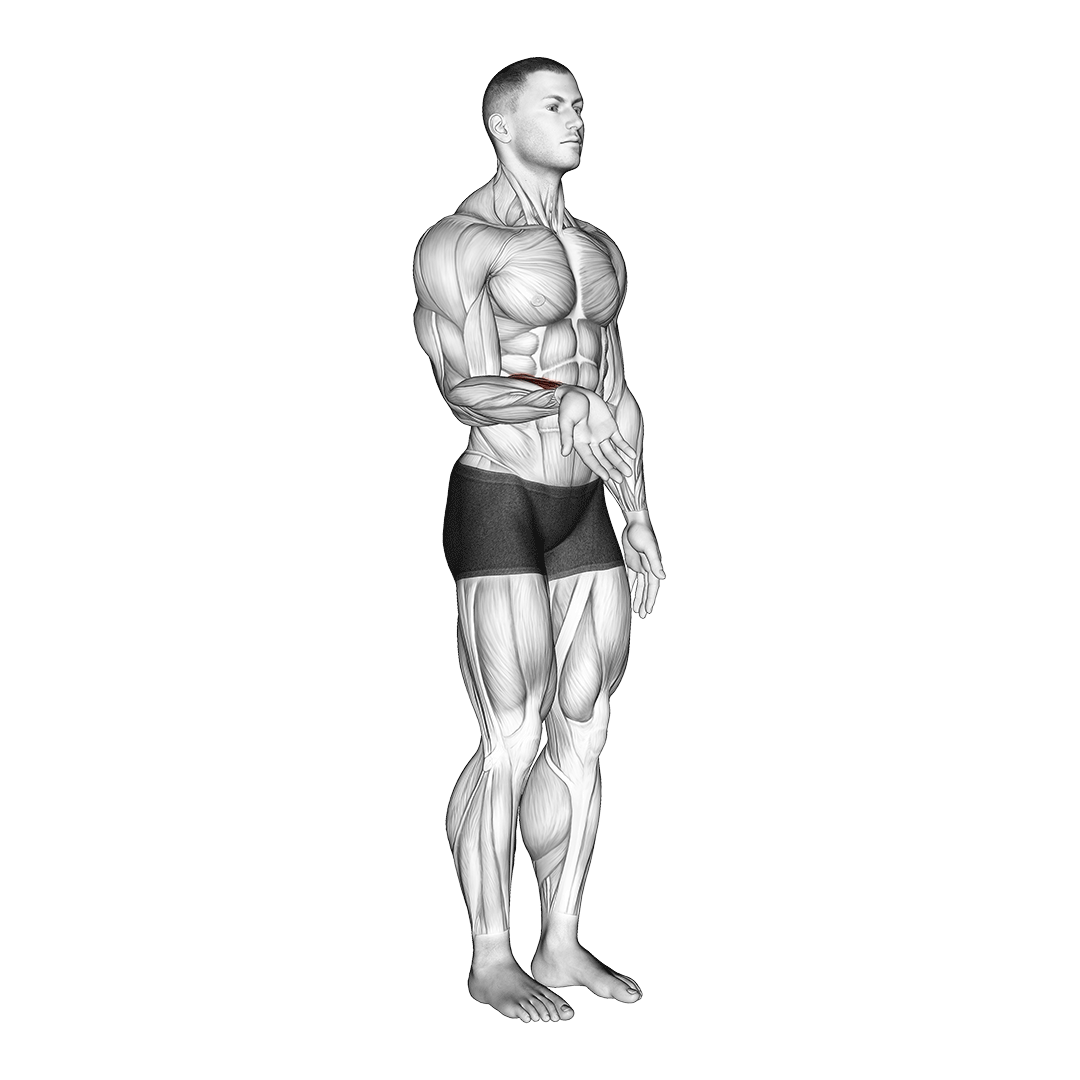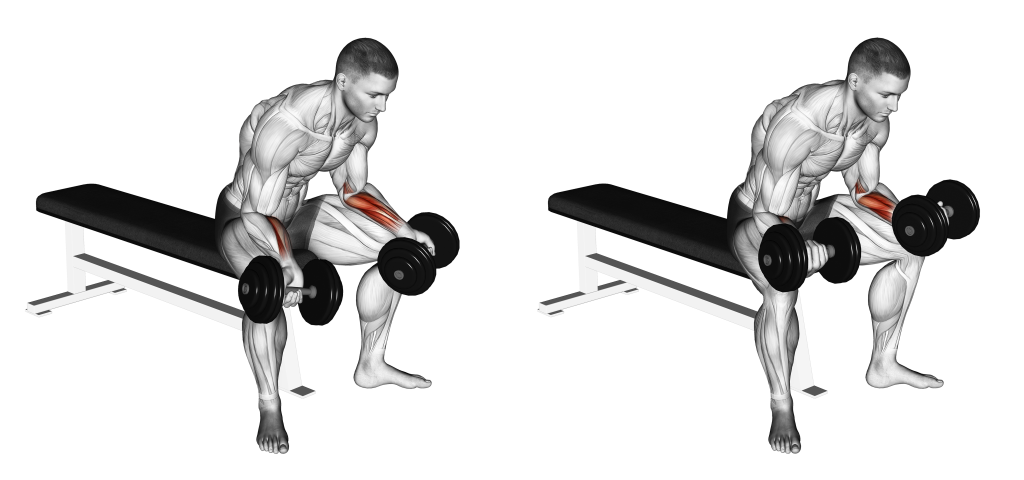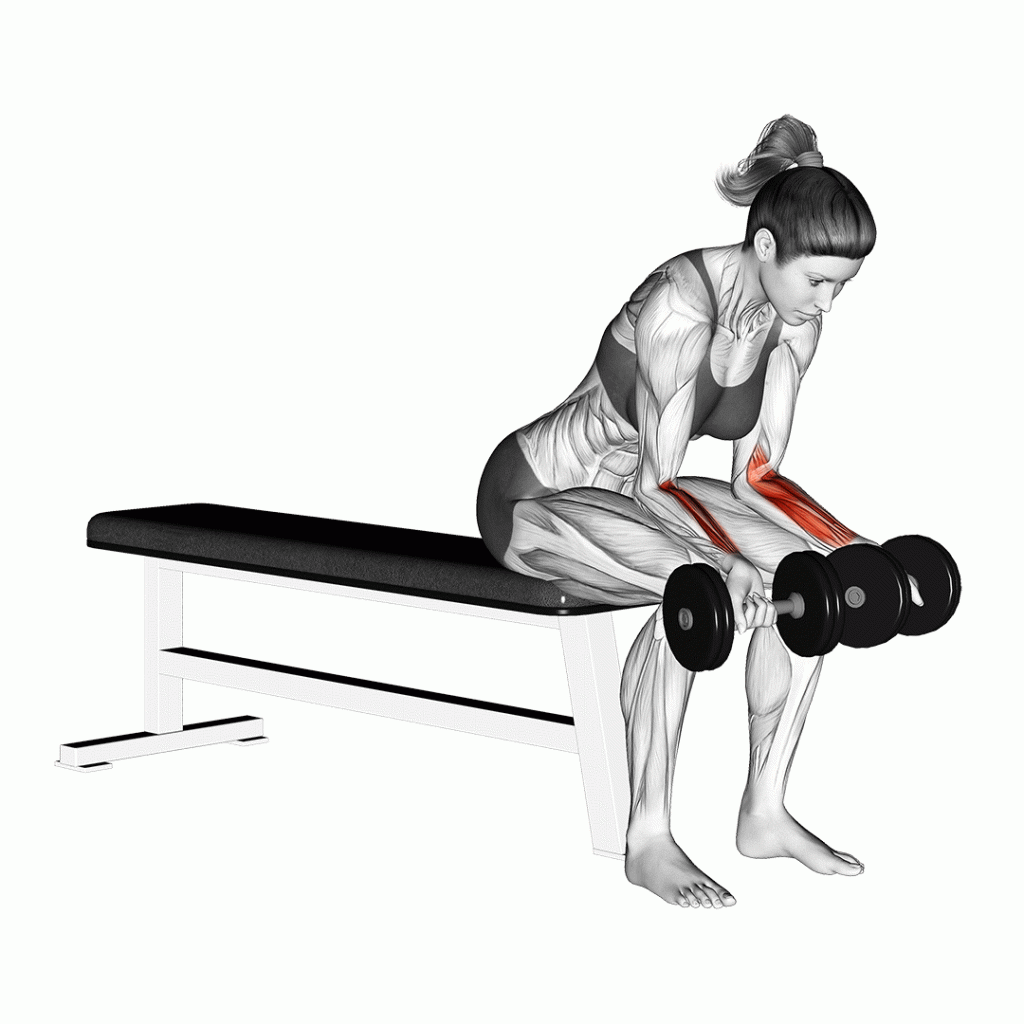What are the Benefits of Dumbbell Wrist Curls?
Outside of rehabilitation, dumbbell wrist curls are usually performed for their forearm strength and mass related benefits.
Benefits of Dumbbell Wrist Curls
Builds Anterior Forearm Strength, Definition and Mass
As mentioned, the main advantage to dumbbell wrist curls is the fact that they build stability, strength and overall muscularity in the wrist flexor section of the forearm muscle group.

Weak and underdeveloped wrist flexors can lead to a thinner appearance to the forearms, weakness in exercises involving wrist flexion or grip strength and generally weaker forearm function as a whole.
Fortunately, when combined with isometric forearm and wrist extensor exercises, the dumbbell wrist curl is perfect for avoiding these issues.
Reinforces Wrist Flexion and Pronation
As the wrist flexor muscles grow stronger, more stable and more mobile through dumbbell wrist curls, so too will the mechanics related to their function.

Essentially, performing dumbbell wrist curls with regularity will cause the wrists to enter a state of flexion with more force, in a smoother manner and also with greater stability. This can be quite useful for individuals with shaky or weak hands - or those that have a history of wrist conditions.
Simple, Highly Specific and Intense
The dumbbell wrist curl is preferred over many forearm exercises due to its highly isolated muscular recruitment and relatively simple movement pattern.

These aspects, combined with the wrist curl’s relative intensity due to the small size of the wrist flexor muscles, equates to the perfect forearm building exercise for just about any type of training program.
Synergizes Well With Wrist Extensor Exercises
The wrist extensors are the direct antagonist muscles to the wrist flexors, meaning that training them together is excellent for building up forearm strength as a whole.

Because the two forearm muscle groups are responsible for the exact opposite mechanics, fatigue is not a limiting factor in this regard and both can be trained to an equal capacity within the same workout session.
